- Home
- Prelims
- Mains
- Current Affairs
- Study Materials
- Test Series
24th Oct 2021
INDIA RANKS 40TH OUT OF 43 GLOBAL PENSION SYSTEMS, AS PER SURVEY
As per the global study done by Mercer Consulting, the Indian pension system ranks a lowly 40th in a comparative index of 43 systems in the Global Pension Systems Rankings 2021.
Aim: To benchmark each retirement income system using more than 50 indicators.
Mercer CFA Institute Global Pension Index(MCGPI):
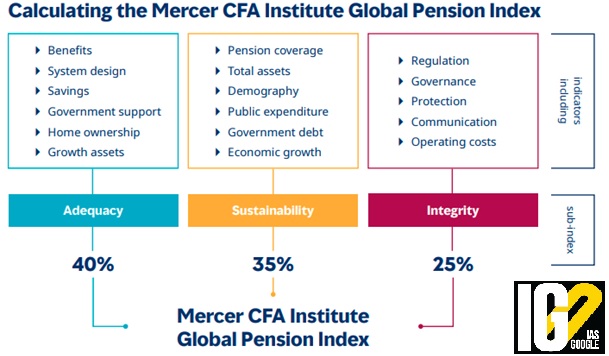
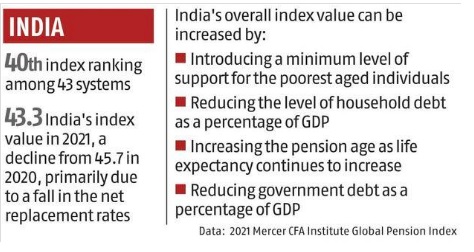
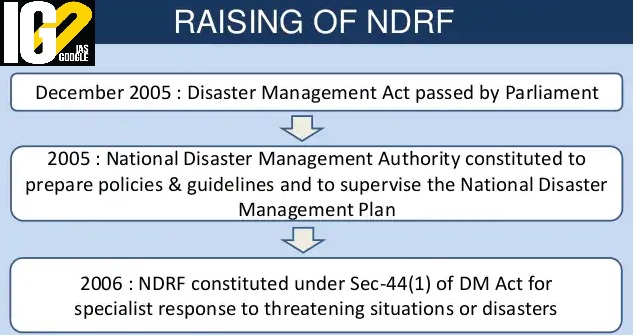 National Disaster Response Force (NDRF) and Fire and Rescue Services personnel were engaged to recover people from the landslide at Makochi in Kokkayar, Kerala recently.
Highlights:
National Disaster Response Force (NDRF) and Fire and Rescue Services personnel were engaged to recover people from the landslide at Makochi in Kokkayar, Kerala recently.
Highlights:
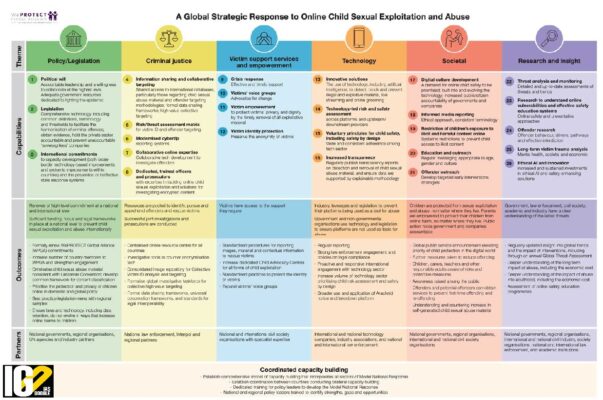


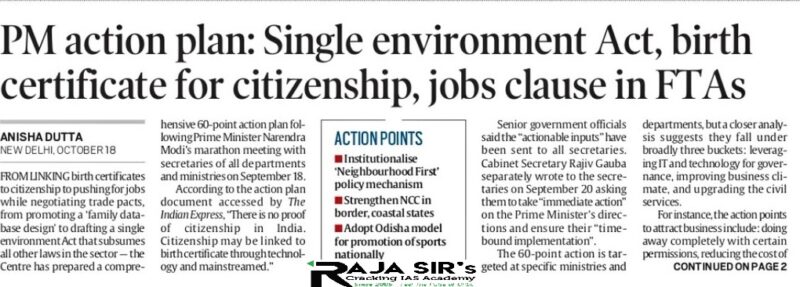 Leveraging IT and technology for governance:
Leveraging IT and technology for governance:
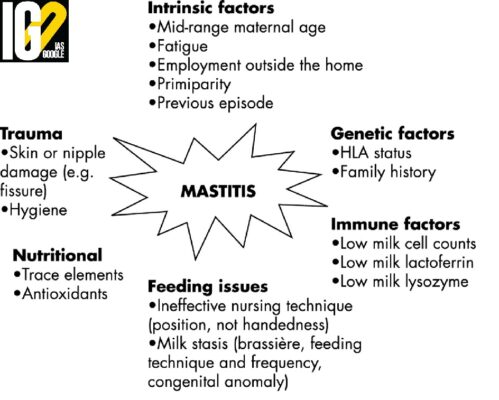


Abhidhamma Day:


- MCGPI is an annual survey by Mercer Consulting, which aims to benchmark the retirement income system.
- MCGPI uses three sub-indices, adequacy, sustainability, and integrity to measure each retirement income system against more than 50 indicators.
- The adequacy sub-index represents the adequacy of the benefits that are being provided .
- The sustainability sub-index represents the likelihood that the current system can provide benefits in the future.
- The integrity sub-index includes many legislative requirements that influence the overall governance and operations of the system which affect the level of confidence that citizens have in their system.
- The Index is published by Mercer, in collaboration with CFA Institute and the Monash Centre for Financial Studies.

- Iceland has the best pension system in the world.
- India had an overall index value of 43.3 among the countries analyzed.
- The index highlights key strengths of retirement pension systems around three sub-indices adequacies, sustainability, and integrity, where India scored 33.5, 41.8, and 61.0, respectively.
- The workforce in India manages pension savings on its own for the most part as the coverage under private pension arrangement is just about 6% in India.
- 90% of the total workforce being in the unorganized sector, measures should be taken to get a larger workforce under pension savings
- India had an overall index value of 43.3 among the countries analyzed, lower than the index value of 45.7 for 2020.
- There are 2 phases of pension plans in India:
- The accumulation phase and vesting phase are the two phases of pension plans in India.
- The investor pays annual premiums until they reach their retirement age in the accumulation phase.
- The vesting phase begins when the investor reaches their retirement age.
- Withdrawal of the entire retirement corpus in one go at retirement is not allowed.
- On retirement, an individual is not allowed to withdraw the entire accumulated retirement corpus.
- They can only withdraw one-third of the accumulated corpus while receiving the rest in the form of an annuity.
- Annuities are taxable
- Contributions made towards pension plans are exempted for tax under section 80CCC up to a maximum limit of Rs. 1 Lakh.
- Pension plans only guarantee positive returns
- Pension plans in India do not guarantee a fixed return on their retirement savings.
- Even the best pension plans only guarantee a positive return on the investment.
- Freedom to choose from a variety of pension plans
- Pension plans sponsored by government-approved mutual funds feature a balanced investment approach.
- They follow investment in both equity and debt in a 40:60 proportion.
 National Disaster Response Force (NDRF) and Fire and Rescue Services personnel were engaged to recover people from the landslide at Makochi in Kokkayar, Kerala recently.
Highlights:
National Disaster Response Force (NDRF) and Fire and Rescue Services personnel were engaged to recover people from the landslide at Makochi in Kokkayar, Kerala recently.
Highlights:
- Police personnel encountered a major issue, as people descending on the tragedy site for a ringside view of ongoing rescue and relief work.
- The police made several announcements to people, urging them to disperse.
- The flow of people hinders rescue operations.
- Emergency services could not proceed to the area as the road was blocked by several hundred onlookers.

- Child sexual exploitation and online abuse have reached their highest level in the last two years, globally.
- Child sexual abuse a chronically underfunded issue and COVID-19 has created the perfect conditions that fuelled a rise in child sexual exploitation and abuse across the globe.
- As per the report, the rise in child ‘self-generated’ sexual material is another trend that challenges the existing response.
- 77% increase in child ‘self-generated’ sexual material from 2019 to 2020.
- As per the global study of childhood experiences of more than 5,000 young adults (aged 18 to 20) across 54 countries.
- 54% of the respondents had experienced at least one online sexual harm incident during childhood.
- 34% had been asked to do something sexually explicit online they were uncomfortable with during their childhood.
- National Center for Missing and Exploited Children (NCMEC) indicated a 106% increase in reports of suspected child sexual exploitation globally.
- During the COVID-19 lockdown in India, there was a 95% rise in searches for child sexual abuse material.
- To show how the global response to child sexual exploitation and abuse online needs a new approach.
- WeProtect Global Alliance is a global movement of people and organizations composed of more than 200 governments, private sector companies, and civil society organizations working together to transform the global response to child sexual exploitation and abuse online.
- The alliance brings together people and organizations with the knowledge, experience, and influence to make the digital world safer for children.
- The Alliance is a public-private partnership.
- It is dedicated to putting online-facilitated child sexual exploitation and abuse on the global agenda and mobilizing a worldwide campaign to end it.
- The number of child labourers in India is 10.1 million of which 5.6 million are boys and 4.5 million are girls.
- In India child labourers can be found in a variety of industries: in brick kilns, carpet weaving, garment making, domestic service, food and refreshment services (such as tea stalls), agriculture, fisheries and mining.
- Child labour and exploitation in India are the result of many factors, including poverty, social norms condoning them, lack of decent work opportunities for adults and adolescents, migration and emergencies.
- Poverty is the main driving cause of child exploitation in India: The Child need to provide a necessary income contribution to one’s household or out of an obligation to fund a family debt, especially considering the susceptibility of Indian families to enter poverty.
- A lack of quality education also causes children particularly girls to turn to work: Girls are two times more likely to take on domestic jobs like cleaning, cooking and general housekeeping if out of school.
- Informal sector has little to no regulation on the production of goods. The informal sector still constitutes 90 percent of the workforce in the country, with majority of child laborers. Recommendations to stop child exploitation in India:
- Spread awareness:
- Parental awareness of the evils of child labor can prevent disruption in schooling and pushing of children into labor.
- Lack of understanding on the part of parents creates situations where traffickers prey upon children and many trafficked children end up in child labor.
- More stringent laws and effective implementation:
- Policymaking is essential to long lasting social change, and lobbying for better laws involves demonstrating how change can bring considerable benefit.
- Sending more children to school:
- India has the world’s largest educational system, yet faces the hurdles of low literacy, due to low enrolment. Organisations like Save the Children execute several initiatives to boost children’s enrolment in schools.
- The organisation maps out-of-school children and those who are at risk of dropping out and ensures that they enter into the fold of education.

- Enrolment and Update: It will cover the real-life challenges being faced by the residents while updating their address.
- Identity and Authentication: UIDAI will provide innovative solutions to prove Identity without sharing the Aadhaar number or any demographics information.
-
- It is looking for innovative applications around face authentication API.
- The objective is to popularize some of the existing and new APIs to solve the needs of residents.
- It is looking for innovative applications around face authentication API.
- As a standard operating procedure, testing will be done to check the age of old rice.
- After the test, the samples indicating green/avocado will only be accepted.
- Any other color development like yellow or orange will be rejected.
- This testing method will nullify the possibility of accepting old rice stock.

- Article 93 says: The House of the People shall choose two members of the House to be respectively Speaker and Deputy Speaker.
- Article 178 contains the corresponding position for Speaker and Deputy Speaker of the Legislative Assembly of a state.
- The Deputy Speaker is elected by the Lok Sabha amongst its members right after the election of the Speaker.
- The date of election of the Deputy Speaker is fixed by the Speaker.
- Like the Speaker, the Deputy Speaker remains in office usually during the life of the Lok Sabha (5 years).
- He may vacate his/her office earlier in any of the following three cases:
- If he ceases to be a member of the Lok Sabha
- If he resigns by writing to the Speaker
- If he is removed by a resolution passed by a majority of all the then members of the Lok Sabha.
- Such a resolution can be moved only after giving 14 days’ advance notice.
- The Deputy Speaker performs the duties of the Speaker’s office when it is vacant.
- He/She acts as the Speaker when the latter is absent from the sitting of the House.
- He/She presides over the joint sitting of both the Houses of Parliament, in case the Speaker is absent from such a sitting.
- The Deputy Speaker, like the Speaker, has the privilege of the Casting Vote in case of tie.
- The Deputy Speaker has a special privilege, when he/she is appointed as a member of a parliamentary committee, he/she automatically becomes its chairman.
 Leveraging IT and technology for governance:
Leveraging IT and technology for governance:
- The plan focuses on leveraging IT and technology for governance, improving business climate, and upgrading the civil services.
- There is no proof of citizenship in India, therefore citizenship will be linked to birth certificate through technology.
- It recommends using Aadhaar for bringing together beneficiary oriented schemes of different ministries.
- A ‘family database design’ has been developed by the ministry of social justice and empowerment and which will be promoted like Aadhaar.
- It aims to streamline disbursement of scholarships to bridge digital divide for underprivileged students & developing indigenous tablets and laptops.
- Digitising all land records by 2023 under the central database called ‘Matribhumi.’
- It would be integrated with e-Courts system to provide transparency on title/possession related issues.
- Doing away with certain permissions, reducing the cost of starting a business in select sectors.
- Automatic notification of clearances, single-point access to all government services,
- Incentives to states for timely land acquisition and forest clearances.
- One comprehensive Environment Management Act that subsumes various laws in the sector.
- Capacity building- training of officers on various aspects of infrastructure in both the Centre and states.
- Infusion of expertise and exposure to latest technologies for higher civil services, performance-based working.
- Clear and specific targets for ministries and departments just like that for public sector undertakings.
- Institutional mechanisms for addressing issues of states given their limited capacities and restructuring of departments through Government Process Re-Engineering every 10 years.
- Appointment of more Chief Information Officers (CIOs) and Chief Technology Officers (CTOs) as data is not being used efficiently.
- All government data should be made accessible to all ministries.
- The medicine called Mastirak Gel, developed by National Innovation Foundation (NIF) has been commercialized through the industry partner Rakesh Pharmaceuticals.

- The medication could minimize Somatic Cell Count (SCC) and improve the udder health.
- The Somatic Cell Count is a parameter, quantified as the number of cells per ml of milk.
- A threshold SCC of 200,000 would determine whether a cow is infected with mastitis.
- Cows with a result of greater than 200,000 are highly likely to be infected on at least one quarter.
- Cows infected with significant pathogens have an SCC of 300,000 or greater.
- Treatment of infected animals with antibiotics poses a public health hazard.
- Mastitis is a common infectious disease. It results in inflammation of in the mammary tissue that sometimes involves an infection.
- It affects farm productivity due to fall in milk quality, thus impacting income-generating activities.
- It is the most common disease in dairy cattle characterized by various degrees of severity - ranging from a mild disease with no gross changes in the secretion (milk) but an increase in inflammatory cells (somatic cells) in the milk, to a moderate disease with an increase in inflammatory cells and gross changes in the milk.
- Microorganism causes the infection includes virus, mycoplasma, fungus and bacteria.
- Physical injury to the mammary region, poor hygiene and/or trauma, also cause this condition.
- Inflammation of the udder that turns into a red and hard mass.
- Breast pain, swelling, warmth and redness.
- The swollen mammary gland is hot and the mere touching causes pain and discomfort to the animal.
- If milked the milk is usually tainted with blood clots, foul smelling brown discharge and milk clots.
- Infected cattle are severely dehydrated and suffer from weight loss.
- Mastitis can be detected at an early stage before the symptoms appear, through California Mastitis Test (CMT).
- The high is due to the various factors such as the reopening of admissions to foreign universities, steady normalisation in foreign travel and rise in economic activity.
- The remittances on account of “study abroad” amounted to an all-time monthly high of $780 million.
- The previous high was $1.87 billion in August 2019.
- Remittances for travel hit 18-month high of $574 million– the highest since February 2020.
- August 2021 also witnessed remittances of $284.8 million for the purpose of “maintenance” of close relatives.
- Traditionally, August witnesses high outward remittance as universities overseas start their new session in September and students remit funds for fee, accommodation, tickets and other set-up costs.
- The year 2019-20 had witnessed the highest outward remittances of $18.76 billion in any financial year since LRS was introduced in 2004.
- India has witnessed a sharp surge in remittances over the last seven years.

- The Liberalised Remittance Scheme (LRS) of the Reserve Bank of India (RBI) allows resident individuals to remit a certain amount of money during a financial year to another country for investment and expenditure.
- Under the Scheme, all resident individuals, including minors, are allowed to freely remit up to USD 2,50,000 per financial year (April – March) for any permissible current or capital account transaction or a combination of both.
- This includes going overseas on employment, studies, travel, emigration, maintenance of close relatives, and medical treatment.
- Shares, debt instruments, and be used to buy immovable properties in overseas market.
- Can open, maintain and hold foreign currency accounts with banks outside India for carrying out transactions permitted under the scheme.
- Buying and selling of foreign exchange abroad, or purchase of lottery tickets or sweep stakes, proscribed magazines.
- Any items that are restricted under Schedule II of Foreign Exchange Management (Current Account Transactions) Rules, 2000.
- Remittances directly or indirectly to countries identified by the Financial Action Task Force as “non-co-operative countries and territories".

- Bhaskarabda, an era counted from the date of the ascension of a 7th-century local ruler Bhaskarvarman, will be added to the Saka and Gregorian.
- The Assam government also decided to have theme-based calendars every year. The theme could include wildlife, plants, culture, cuisine and other aspects of Assam.
- The Bhaskarabda calendar is a luni-solar calendar based on both the phases of the moon and the solar year.
- It differs from the Gregorian calendar by 593 years and is counted from the date of the ascension of Kumar Bhaskarvarman to the throne of Kamrup.
- It begins and ends at sunrise over 24 hours unlike the Gregorian, where a day starts at midnight.
- The earliest known dynasty to rule Assam was the Varman dynasty of Kamrupa which ruled for over 300 years, from mid-4th century CE.
- King Pushyavarman was the founder of the dynasty.
- Bhaskarvarman was the last king of the dynasty, who ruled from 600 CE- 650 CE.
- He was a contemporary and political ally of northern Indian ruler Harshavardhana.
- Banabhatta, a noted Sanskrit scholar, in his biography of Harshavardhana -Harshacharita, has compared this alliance to Shiv-Kuber and Karna- Duryodhana.
- He issued the Dubi and Nidhanpur copper plate grants and a clay seal found in Nalanda.
- He was visited by Xuanzang (Hiuen Tsang) and Li Yi-piao, the envoy of the Tang dynasty who have left accounts of the king and the kingdom. Bhaskarvarman was referred to as Kumara Raja in Chinese accounts.
- As per the accounts, Bhaskarvarman was lover of learning and a great patron of scholars.
- On the occasion, the Prime Minister inaugurated the Kushinagar International Airport & laid the foundation stone of development projects in Kushinagar.
- The inauguration of the Airport was marked by landing of first flight at the airport from Colombo, Sri Lanka.
- The flight carried Sri Lankan delegation comprising 125 Buddhist Monks & dignitaries.
- A 12-member Holy Relic entourage brought Holy Buddha Relics for Exposition.
- The airport has been built at the estimated cost of Rs. 260 crores.
- It will be facilitating domestic as well as international pilgrims to visit the Mahaparinirvana sthal of Lord Buddha.
- Inauguration of the airport is an attempt of connecting Buddhist pilgrimage holy sites from across the world.
- It is an important step of boosting investment & employment opportunities in the region.
- Buddhist Circuit is one of the fifteen thematic circuits identified for development under the Swadesh Darshan Scheme of Ministry of Tourism in 2015.
- All sites in the country related to Buddhism including Kapilvastu are covered under the Buddhist Circuit for development.
| Madhya Pradesh (2016-17) | Development of Buddhist Circuit in Sanchi-Satna-Rewa-Mandsaur-Dhar in Madhya Pradesh. |
| Uttar Pradesh (2016-17) | Development of Sarawasti, Kushinagar, & Kapilvastu. |
| Bihar (2016-17) | Construction of Convention Centre adjacent to Maya Sarovar on the western side at Bodhgaya, Bihar |
| Gujarat (2017-18) | Development of Junagadh- Gir-Somnath- Bharuch-Kutch- Bhavnagar- Rajkot- Mehsana in Gujarat |
- The day marks the end of three-month rainy retreat.
- Varshavaas or Vassa – observed as a retreat by monks and nuns by staying in vihara during rainy season, is a time of giving, for the laity to express gratitude to Sangh.
- Abhidhamma Day is celebrated on the full moon day of the 7th Burmese Lunar month.
- It is celebrated to mark Buddha’s return to this earth after preaching the Abhidhamma Pitaka.
- In Buddhism the Abhidhamma Pitaka is an important scripture.
- He is believed to have gone to the heaven to teach Abhidhamma Pitaka to his mother.
- The teaching took three months after which Buddha came back to Earth.
- Bodh Gaya:
- This is one of four main Buddhist pilgrimage site in Gaya, Bihar.
- Under the Bodhi Tree, the Buddha attained enlightenment.
- Sarnath:
- This is a sacred site where the Buddha delivered his first sermon, taught the Dhamma and formed the Sangha.
- In Sarnath lies the Dhamek Stupa as well as relics of other ancient stupas. The Ashoka Pillar remains are also here.
- Kushinagar:
- Kushinagar is the place in Uttar Pradesh where the Buddha attained Parinirvana.
- The Parinirvana Stupa has the reclining statue of ‘dying Buddha’.
- The site is mainly visited by devout Buddhist followers and monks.
- Shravasti:
- It is a significant pilgrimage site for Buddhists and travellers in Uttar Pradesh.
- Buddha spent most of the time after enlightenment in Shravasti.
- It has Jetavana Monastery, Angulimala Stupas and Anandabodhi Tree.
- Sankasya:
- Here the Buddha is said to have returned after preaching the dhamma in the world of gods.
- He descended here accompanied by Indra and Brahma after preaching the dhamma to his mother in heaven.
- Rajgrir:
- The Vulture Peak at Rajgir, Bihar was Buddha’s favorite retreats.
- He delivered many important sermons. Buddhist caves of Saptaparni is where the first Buddhist council was held after his death.
- This place has Shanti Stupa to see four beautiful Buddha statues,
- Nalanda about 15 kms away to see the world heritage site of Nalanda Mahavihara.
- Vaishali:
- The ancient city of Vaishali in Bihar was considered one of the earliest examples of a republic.
- Here the Buddha preached his last sermon before he attained his parinirvana.
- The Ashoka Pillar can be seen near the remains of a brick stupa where the last sermon was delivered.
- Lumbini:
- Located in Nepal, Lumbini forms the fourth important pilgrimage places in Buddhism.
- This is the place where the Buddha was born.
- Buddhist temples, the Lumbini Museum and the Japanese Peace Stupa are found here.
- October, 2021 has emerged as the wettest month for Delhi since 1960.
- States like Kerala, Uttarakhand and Madhya Pradesh have received very heavy rainfall in October, even though it is a month of transition during which the southwest monsoon withdraws and gives way to the northeast monsoon.
- A combination of delayed monsoon and the development of low-pressure areas at multiple places is causing rainfalls at several places.

- The Southwest monsoons starts to retreat in the first week of September from Pakistan border in Northwest India.
- October and November are the months of post (or retreating) monsoon season.
- The retreat of these winds takes place due to weakening of low-pressure area over the northwestern parts.
- This happens due to low temperatures caused by apparent shift of the sun towards the equator and also owing to the widespread rains bringing down temperatures perceptibly.
- Consequently, the air pressure starts decreasing. Such changes in the patterns of atmospheric pressure causes Southwest monsoons to withdraw.
- Hence, this period is known as the season of retreating Southwest monsoons.
- By the end of October, these winds retreat from most of northern India. As a result, fair weather conditions prevail over this region.
- The low-pressure area lying over Northwest India is transferred to the middle of the Bay of Bengal by the end of October.
- As a result of these unstable conditions, severe cyclonic storms originate in the Bay of Bengal. These cyclonic storms strike along the eastern coast of India causing wide spread rain in the coastal regions.
- Tamil Nadu coast receives maximum of its rainfall during October and November-the period of retreating monsoons.
- Withdrawal of southwest monsoon takes longer time than the advancing one.
- Clearer skies making climate of many places hotter.
- Tropical Cyclones formations in the Bay of Bengal.
- Pressure gradient becomes low.









 Latest News
Latest News
 General Studies
General Studies